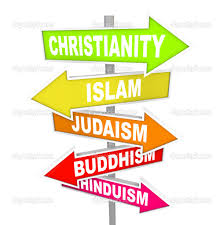Webquest - Understanding Major Religions of the World
|
| ||||||||||||
INTRODUCTION
Religion is one of the cornerstones of civilization. Historically, religion had a significant impact on shaping our world. Currently, religion continues to greatly influence the world around us. As the global community continues to shrink and become more interdependent, it is extremely important for people to become more aware of one another’s spiritual heritage. Increased knowledge of one another’s religious beliefs, fosters tolerance and understanding which is critical for global peace and understanding.
Religion is one of the cornerstones of civilization. Historically, religion had a significant impact on shaping our world. Currently, religion continues to greatly influence the world around us. As the global community continues to shrink and become more interdependent, it is extremely important for people to become more aware of one another’s spiritual heritage. Increased knowledge of one another’s religious beliefs, fosters tolerance and understanding which is critical for global peace and understanding.
THE TASK AND THE PROCESS
Your task is to research five major religions. In your research, you should be concentrating on the modern day aspects of the religion.
Your task is to research five major religions. In your research, you should be concentrating on the modern day aspects of the religion.
|
Use the following links to complete the Chart
|
Religion
Major Religions of the World
The Major Religions of the World
United Religions Initiative
Major Religions of the World
Major Religions of the World
The Major Religions of the World
United Religions Initiative
Major Religions of the World
CONCLUSION
By studying the origins, traditions, customs and beliefs of the world’s five major religions, we will have a better understanding of the civilizations that developed in various regions of the world. Religion has helped shape and forms the world we live in. By taking a close and personal look into religions with which we are not familiar, we will gain an insight into how the world has evolved into the place we live in today and maybe we can begin to develop a tolerance for people who have different beliefs
By studying the origins, traditions, customs and beliefs of the world’s five major religions, we will have a better understanding of the civilizations that developed in various regions of the world. Religion has helped shape and forms the world we live in. By taking a close and personal look into religions with which we are not familiar, we will gain an insight into how the world has evolved into the place we live in today and maybe we can begin to develop a tolerance for people who have different beliefs

